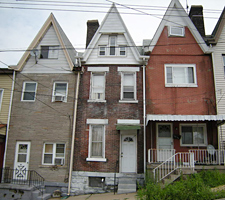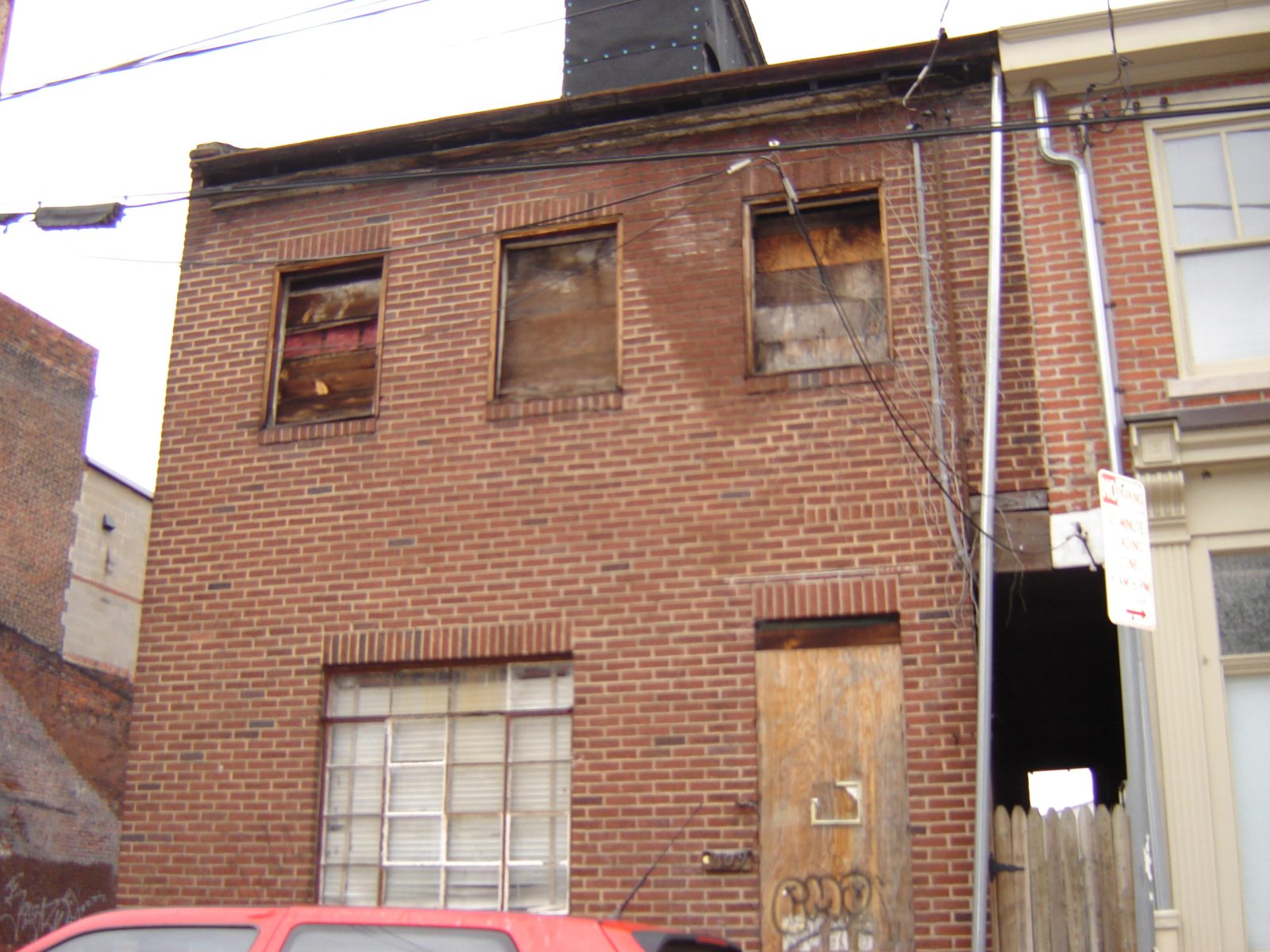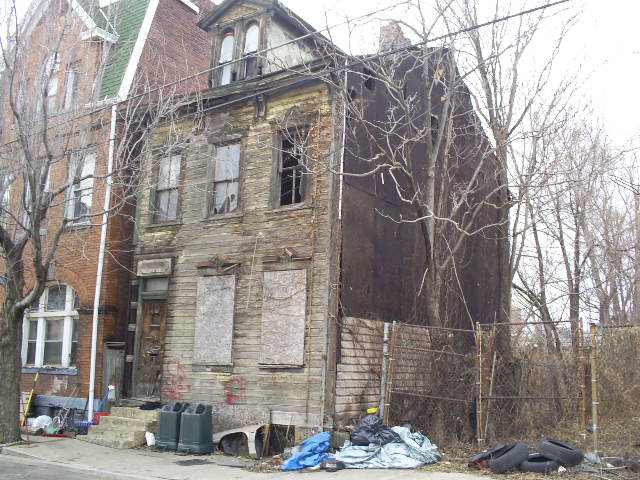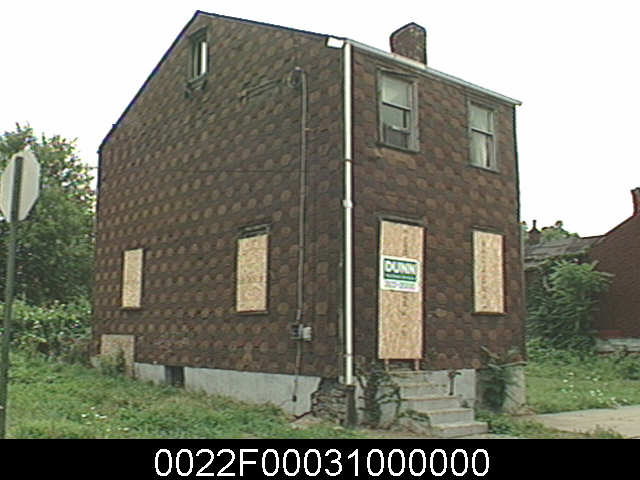
Category Archive: Threatened Historic Resources
-
Remarks by Louise Sturgess at the Carnegie Library of Pittsburgh Public Forum
Monday, December 14, 2009
4:00 p.m.,
Carnegie Library Lecture Hall, OaklandTwo-minute remarks presented by Louise Sturgess, Executive Director
Pittsburgh History & Landmarks FoundationDuring the Great Depression, the hours of all Carnegie branch libraries were extended and no branch libraries were closed. That fact can inspire all of us in our efforts to keep the Carnegie branch libraries open and funded. That shows how important the branch libraries were then to Pittsburghers and to individual neighborhoods. And, their importance has not diminished over time. Pittsburgh’s branch libraries are essential educational and community centers, adding, in many cases, to main-street activity that community development groups and citizens are working hard to protect and promote.
Pittsburgh History & Landmarks Foundation encourages the Carnegie Library Board and staff to see the historic branch library buildings as assets, rather than liabilities, and to re-focus and concentrate resources on keeping the existing buildings open and bringing them into compliance with accessibility codes and modern HVAC standards. We are not in favor of using funds to construct new library facilities, or move existing branches into alternate spaces, or commission studies from groups removed from the communities.
Just as the Pittsburgh Children’s Museum used a grant from the National Endowment for the Arts to fund a nationwide design competition showing how 2 historic buildings could be combined with new construction to create an award-winning 21st-century museum, the Carnegie Libraries of Pittsburgh could apply for an NEA grant so design professionals could prepare a comprehensive plan for renovating the historic branch libraries.
Such a design process would be of interest to communities nationwide since Carnegie Libraries elsewhere are being closed due to renovation needs and lack of funds. Just as Pittsburgh led the nation in designing a branch library system between 1898 and 1903, why not lead the nation in renovating the architecturally significant buildings that continue to serve their neighborhoods today?
Remember too that Pittsburgh has been designated a Preserve America Community. The City can apply for federal funds for projects that:- “protect and celebrate . . . heritage;
- use . . . historic assets for . . . community revitalization; and
- encourage people to experience and appreciate local historic resources through education . . .”
- According to the guidelines, successful applicants “. . . serve as models to communities nationwide. . .”
As an organization, Pittsburgh History & Landmarks Foundation has written about the significance of the Carnegie branch libraries, successfully nominated them as City Historic Structures, held educational programs inside them, and showed them off during Main Street Walking Tours. We have been consistently working with the Library staff and board to ensure that what has been given to Pittsburgh and its citizens is cared for responsibly.
We are in favor of keeping the libraries open, and keeping them where they are. We would support the efforts of the Library and City to raise funds for needed improvements and renovations so Pittsburgh’s branch library system can serve, once again, as a model for the nation.
-
Neighborhood & Main Street Properties Available
Pittsburgh History & Landmarks Foundation
Main Street Properties for Sale & Lease: Click Here
Market at Fifth: Apartments & Retail Space in Pittsburgh’s Historic Downtown
From time to time, PHLF lists other properties for sale and lease. These listings can be found here when they are available.
——————————————————————————————————————-
Links Provided For Your Convenience, does not imply endorsement.
City of Pittsburgh Properties For Sale
The City of Pittsburgh, in an effort to reduce the number of vacant or abandoned properties, has created sources that offers a menu of properties for sale. Many of these properties are in Pittsburgh’s most historic neighborhoods.

The Real Estate Division of the Department of Finance and the Urban Redevelopment Authority accepts inquiries from the general public for purchase of those properties.
Properties for Sale
Court Auction Sales
Sealed Bid Sales
Side Yard Sales
Vacant Lots for Sale
-
Landmarks supports the nomination of the Old Stone Tavern as a City-Designated Historic Structure.
PREPARED TESTIMONY OF
ANNE E. NELSON, ESQ.
GENERAL COUNSEL
PITTSBURGH HISTORY & LANDMARKS FOUNDATION
BEFORE HISTORIC REVIEW COMMISSION, CITY OF PITTSBURGH
PUBLIC HEARING ON THE OLD STONE TAVERN
CITY HISTORIC STRUCTURE NOMINATIONApril 1, 2009
Landmarks supports the nomination of the Old Stone Tavern to become a City-Designated Historic Structure.
The building was surveyed in both of Landmarks’ architectural surveys of Allegheny County and was chosen for inclusion in Landmark Architecture of Allegheny County Pennsylvania by James D. Van Trump and Arthur P. Ziegler, Jr., published in 1967, and Pittsburgh’s Landmark Architecture by Walter Kidney, published in 1997.
Walter Kidney dates the building c. 1800 since it is “a work in masonry not logs.” Van Trump and Ziegler describe the building as “[o]ne of the earliest surviving local taverns,” and state that “[t]his tavern must be preserved….”
Therefore, Landmarks supports the nomination of the Old Stone Tavern.
-
Landmarks Joins City of Chicago’s Appeal of Landmark Decision
by Anne E. Nelson, General Counsel
PHLF News
March 11, 2009On March 11, 2009, Landmarks joined the National Trust for Historic Preservation, Landmarks Illinois, New York Landmarks Conservancy, Cleveland Restoration Society, sixty-three Illinois municipalities and other organizations in filing an amicus curiae motion before the Supreme Court of Illinois in the case Hanna v. City of Chicago. In Hanna, two Chicago property owners challenged the constitutionality of the city’s landmark ordinance creating a historic district that included the property they owned. The property owners were successful at the appellate court level.
The brief urged the Supreme Court of Illinois to accept the City of Chicago’s Leave to Appeal and to reverse the appellate court’s decision that Chicago’s landmarks ordinance was “vague, ambiguous, and overly broad,” and that, as such, the ordinance amounted to an unconstitutional delegation of discretionary authority by the Chicago City Council to the Landmarks Commission.
The brief made the following four arguments:
- The appellate court’s opinion threatens the validity of similar laws and ordinances throughout Illinois;
- The United States District Court upheld the constitutionality of Chicago’s landmark ordinance against a vagueness challenge in 1977 and 1994;
- In other states, courts have overwhelmingly rejected vagueness challenges to criteria for designating landmarks and historic districts in local preservation ordinances; and
- Courts have upheld preservation ordinances in 24 states and the District of Columbia against vagueness and unlawful delegation claims.
On March 24, 2009, the Illinois Supreme Court denied the motion of the amici to file a state in support of the City of Chicago’s petition. While disappointing, the filing was still successful in calling the court’s attention to the many cities and organizations from around the nation that support the City of Chicago’s position.
-
Landmarks opposes the demolitions of 1403 and 1414 Nixon Street and 1109 Bingham Street
PREPARED TESTIMONY OF
ANNE E. NELSON, ESQ., GENERAL COUNSEL
PITTSBURGH HISTORY & LANDMARKS FOUNDATIONBEFORE HISTORIC REVIEW COMMISSION,
CITY OF PITTSBURGH PUBLIC HEARING ON CITY DEMOLITIONSJANUARY 7, 2008
Landmarks opposes the demolitions of 1403 and 1414 Nixon Street and 1109 Bingham Street because the City was instructed by the U.S. Department of Housing and Urban Development (HUD) to cease all demolition activities for any buildings located in National Register eligible or listed or local designated historic districts until the City complies with Section 106 of the National Historic Preservation Act and revises its procedures and relevant documentation.
HUD reiterated its instructions and concerns with the City’s Section 106 compliance in a letter dated December 29, 2008. In this letter, the City was further instructed to respond to HUD by January 16, 2009 with: (1) an update on the City’s progress in revising its procedures and relevant documentation to comply with Section 106, (2) assurance that the City has ceased demolition activities, and (3) addressing Landmarks’ concerns.
It is distressing that the City has failed to comply with Section 106 of the National Historic Preservation Act over the past six months. We have yet to receive any responses from the City to our letters commenting on its compliance with Section 106 that were sent in August and September 2008, nor have we received a response to our letter dated July 29, 2008 requesting to be a consulting party.
Landmarks will oppose all City demolitions in historic districts until it complies with Section 106, and we are notified of our consulting party status.
- 1109 Bingham Street
- 1414 Nixon Street
- 1403 Nixon Street
-
Parishioners Decry Demolished 157-Year-Old Church in Elizabeth
WTAE
August 26, 2008A wrecking ball demolished a 157-year-old church in Elizabeth on Monday after decades of debate over the building’s future.
St. Michael the Archangel Church, built in 1851, closed its doors in 1987 after the Pittsburgh Diocese deemed the structure unsafe.
Long-time parishioners told WTAE Channel 4’s Jon Greiner Monday night that they believed the structure withstood time well.
"It was for the coal miners and the ship builders from Elizabeth. It stood up during the Civil War and here we are closing it," said Susan Sopko, a former parishioner. "It’s an historic landmark." A group of parishioners tried unsuccessfully to save the church, even offering to buy it, which the diocese turned down.
"That’s not what I wanted to see. We would rather have kept it a historical monument and a chapel of convenience," said J.C. Natale, a former parishioner. "We tried for 21 years and this is the end result."
Arnold Shaner took pictures of the demolition. He and five siblings were all baptized and married in the church."There’s a lot of memories in there. I was a wee guy. My mom used to sing at weddings," he said. "I spent a lot of hours in that church."
Shaner’s mother also drew the design for what was to become the Archangel Michael that stood guard over the church for decades — a guardian who is scheduled to come down Tuesday with the steeple and remainder of the church.
The Save Our Church group said its members plan further investigate the church was actually torn down without proper permits.
-
Pittsburgh council OKs historic status for Malta Temple
By Jeremy Boren
TRIBUNE-REVIEW
Wednesday, July 30, 2008In a preliminary vote today, Pittsburgh City Council dubbed the 81-year-old Malta Temple building on the North Side a historic structure.The historic status prevents the Salvation Army, the owner, from demolishing the building without the Historic Review Commission’s consent. The nonprofit religious organization had planned to raze it and build a $5 million social services center in its place.Councilman Ricky Burgess was the sole voice of dissent in the 8-1 vote in favor of historic status. He said the building qualifies as a church and shouldn’t have the historic designation forced upon it.
The Mexican War Streets Society, a neighborhood group, nominated the building for historic protection to preserve the neighborhood’s historic appeal.
Jeremy Boren can be reached at jboren@tribweb.comor 412-765-2312.
-
Council delays vote on status of historic North Side shelter
By The Tribune-Review
Thursday, July 17, 2008Pittsburgh City Council delayed a vote Wednesday on whether to give historic protection to a North Side building that serves as a Salvation Army homeless shelter and chapel.
The Salvation Army wants to demolish the 81-year-old building, which once served as the headquarters of the Ancient and Illustrious Order of the Knights of Malta, a social and community service club.The Mexican War Streets Society and North Side historic preservationists want to save the building because they believe its removal would ruin the historic character of the neighborhood. Council could consider the matter in two weeks.




